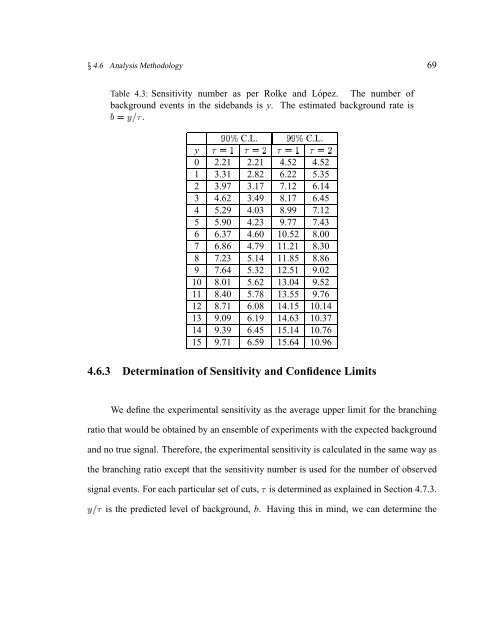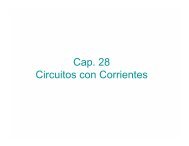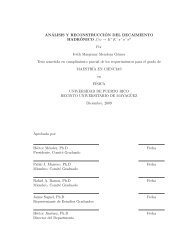A Search for Rare Decay D0 --> mu+mu - High Energy Physics UPRM
A Search for Rare Decay D0 --> mu+mu - High Energy Physics UPRM
A Search for Rare Decay D0 --> mu+mu - High Energy Physics UPRM
Create successful ePaper yourself
Turn your PDF publications into a flip-book with our unique Google optimized e-Paper software.
4.6 Analysis Methodology 69”Table 4.3: Sensitivity number as per Rolke and López. The number ofbackground events in the sidebands is y. The estimated background rate isC.L.C.L.–—ž›š¦• . Ÿ ¡ŸŸ¡•¢—¤£ •¢—¦¥ •¢—§£ •¢—¦¥0 2.21 2.21 4.52 4.521 3.31 2.82 6.22 5.35y2 3.97 3.17 7.12 6.143 4.62 3.49 8.17 6.454 5.29 4.03 8.99 7.125 5.90 4.23 9.77 7.436 6.37 4.60 10.52 8.007 6.86 4.79 11.21 8.308 7.23 5.14 11.85 8.869 7.64 5.32 12.51 9.0210 8.01 5.62 13.04 9.5211 8.40 5.78 13.55 9.7612 8.71 6.08 14.15 10.1413 9.09 6.19 14.63 10.3714 9.39 6.45 15.14 10.7615 9.71 6.59 15.64 10.964.6.3 Determination of Sensitivity and Confidence LimitsWe define the experimental sensitivity as the average upper limit <strong>for</strong> the branchingratio that would be obtained by an ensemble of experiments with the expected backgroundand no true signal. There<strong>for</strong>e, the experimental sensitivity is calculated in the same way asthe branching ratio except that the sensitivity number is used <strong>for</strong> the number of observedsignal events. For each particular set of • cuts, is determined as explained in Section 4.7.3.is the predicted level of background, b. Having this in mind, we can determine the›š¦•






